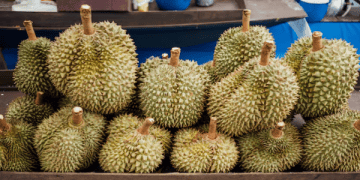Vietnam’s fruit and vegetable exports fell by 10.5% year-on-year in March, totaling an estimated $421 million, marking the third consecutive month of decline. The sector had already experienced a 5.2% decrease in January ($416 million) and a 6.5% drop in February ($303 million).
According to the Vietnam Fruit and Vegetable Association, the primary factor behind the decline is the reduction in durian exports, a key contributor to the country’s overall fruit export revenue.
Since the beginning of the year, China—Vietnam’s largest export market—has introduced new import regulations requiring all durian shipments to undergo testing for cadmium and auramine O residues at accredited laboratories. Cadmium, a heavy metal, and auramine O, an industrial dye, are strictly regulated due to their potential health risks.
These additional testing requirements have led to longer customs clearance times and increased challenges for exporters. Some businesses have temporarily halted shipments to China to complete the necessary compliance procedures, according to Dang Phuc Nguyen, General Secretary of the Vietnam Fruit and Vegetable Association.
If the situation continues, annual export revenues could fall short of last year’s total of $7.15 billion, of which durian alone contributed $3.4 billion—nearly 50% of total fruit and vegetable exports.
The sector has set a $8 billion export target for 2024, but achieving this goal depends on how quickly regulatory challenges can be addressed.
Stay current with supply chain report news at The Supply Chain Report. For international trade resources, visit ADAMftd.com.
#VietnamExports #FruitTrade #SupplyChainNews #AgricultureExports #DurianMarket

















